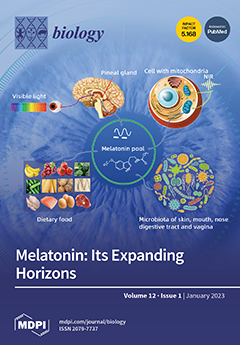Despite (or perhaps because of) intensive multidisciplinary research, opinions on the optimal number of species recognised within the Eurasian orchid genus
Ophrys range from nine to at least 400. The lower figure of nine macrospecies is based primarily on seeking small but reliable
[...] Read more.
Despite (or perhaps because of) intensive multidisciplinary research, opinions on the optimal number of species recognised within the Eurasian orchid genus
Ophrys range from nine to at least 400. The lower figure of nine macrospecies is based primarily on seeking small but reliable discontinuities in DNA ‘barcode’ regions, an approach subsequently reinforced and finessed via high-throughput sequencing studies. The upper figure of ca. 400 microspecies reflects the morphological authoritarianism of traditional taxonomy combined with belief in extreme pollinator specificity caused by reliance on pollination through pseudo-copulation, enacted by bees and wasps. Groupings of microspecies that are less inclusive than macrospecies are termed mesospecies. Herein, we present multivariate morphometric analyses based on 51 characters scored for 457 individual plants that together span the full morphological and molecular diversity within the genus
Ophrys, encompassing 113 named microspecies that collectively represent all 29 mesospecies and all nine macrospecies. We critique our preferred morphometric approach of accumulating heterogeneous data and analysing them primarily using principal coordinates, noting that our conclusions would have been strengthened by even greater sampling and the inclusion of data describing pseudo-pheromone cocktails. Morphological variation within
Ophrys proved to be exceptionally multidimensional, lacking strong directional trends. Multivariate clustering of plants according to prior taxonomy was typically weak, irrespective of whether it was assessed at the level of macrospecies, mesospecies or microspecies; considerable morphological overlap was evident even between subsets of the molecularly differentiable macrospecies. Characters supporting genuine taxonomic distinctions were often sufficiently subtle that they were masked by greater and more positively correlated variation that reflected strong contrasts in flower size, tepal colour or, less often, plant size. Individual macrospecies appear to represent morphological continua, within which taxonomic divisions are likely to prove arbitrary if based exclusively on morphological criteria and adequately sampled across their geographic range. It remains unclear how much of the mosaic of subtle character variation among the microspecies reflects genetic versus epigenetic or non-genetic influences and what proportion of any contrasts observed in gene frequencies can be attributed to the adaptive microevolution that is widely considered to dictate speciation in the genus. Moreover, supplementing weak morphological criteria with extrinsic criteria, typically by imposing constraints on geographic location and/or supposed pollinator preference, assumes rather than demonstrates the presence of even the weakest of species boundaries. Overall, it is clear that entities in
Ophrys below the level of macrospecies have insufficiently structured variation, either phenotypic or genotypic, to be resolved into discrete, self-circumscribing (“natural”) entities that can legitimately be equated with species as delimited within other less specialised plant genera. Our search for a non-arbitrary (meso)species concept competent to circumscribe an intermediate number of species has so far proven unsuccessful.
Full article






